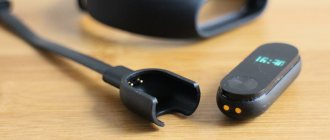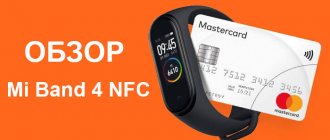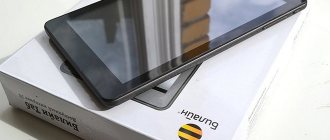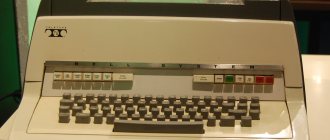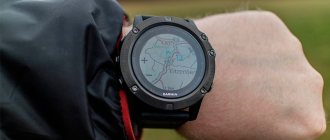Lately, many people have seen some kind of “smart” accessory on their hands. For some it is a smart watch, sometimes more like a smartphone, for others it is a fitness bracelet, depending on the goals being pursued.
What a smart watch is and what it is needed for, we have already written in this article, but now we will figure out what a fitness bracelet is, what it is needed for and what it can do.
What is a fitness bracelet?
A fitness bracelet, or it can also be called an activity tracker, smart bracelet, fitness tracker, etc. is an electronic device that helps monitor certain activities such as running, walking, distance, sleep quality and heart rate. It can also perform some useful and convenient functions, such as notifying about calls and messages, acting as a “smart” alarm clock, reminding about activity, etc.
The first models of such devices were intended mainly for measuring heart rate; later, functions for counting steps and calories burned were added. But progress does not stand still, and modern fitness bracelets can perform almost the same functions as smart watches.
Main types and choice
Fitness trackers today are being produced very actively, by a variety of developers. Which one to choose? It's nice that you can choose a simple and inexpensive bracelet for yourself. At the same time, it surprises with its functionality.
Here are the most popular and worthy models:
- Xiaomi Mi Band 2 is an inexpensive and functional bracelet, quite suitable for regular use in everyday life;
- HONOR Band 5 is an inexpensive, very convenient tracker with a tempered glass screen and simple controls (even an elderly person can figure it out), very accurate;
- Fitbit Flex 2 is a functional and very stylish tracker, but its price is not exorbitant, waterproof, and suitable even for swimmers;
- Garmin Vivosmart HR is a tracker with powerful vibration and many functions that will make even a very lazy person active;
- Huawei Fit is ideal for runners and serious athletes, with many features and high precision;
- Asus ZenWatch 3 is a smartwatch designed more for professional athletes with serious workloads.
There are many types of trackers, there are devices for beginners and for professionals. They can even be intimidating to those new to the topic. Where to start to make the best choice and buy the perfect one for you.
Therefore, it is advisable to take into account the following factors when choosing a fitness bracelet: your lifestyle, your wishes and problems, design, functionality, manufacturer reliability, cost, reviews from owners.
Video review of how the Xiaomi Mi Band 2 fitness bracelet works
What is a fitness bracelet for?
There can be many reasons for purchasing a fitness tracker, and it is different for everyone. For some it is a fashion accessory, an element of style or a tribute to fashion, for others it is a personal assistant and personal fitness tracker, for others it is an opportunity to learn more about their body and activity, or all these factors together.
But seriously, fitness bracelets are devices that help you take care of yourself throughout the day, force yourself to move more and control any changes in the body’s functioning. In some cases, such a gadget can even save lives, for example, by detecting an uncharacteristic heart rate or fall, and sending an alarm signal to relatives or a doctor.
Fitness bracelets also collect activity data and keep records of them. This data will help novice athletes and people leading an active lifestyle choose the optimal exercise regimen, alternating sleep and wakefulness, determine the effectiveness of the diet, etc. And first of all, fitness trackers will be useful for people experiencing health problems (arrhythmia, hypotension, hypertension and others).
Several in one
That is, one such smart bracelet can replace several complex, expensive and bulky devices at once: pedometer, heart rate monitor, gyroscope, alarm clock, blood pressure monitor, accelerometer, spo2 sensor and others. And also a whole personal trainer!
Using Bluetooth® Smart technology, the fitness bracelet can be paired with various other gadgets - to build charts, communicate, build routes, track your progress, and so on.
An additional plus is that the device easily synchronizes with your smartphone. Thanks to this, it frees the hands of its owner. At the same time, it makes it possible to read letters in the mail and see all the messages that arrive on your smartphone.
I would like to immediately dispel a very common myth: this device is required not only by women and athletes, no!
After all, a fitness bracelet is not a decoration, but a reliable means of monitoring your health.
Therefore, it will help children and adolescents, and will also be useful for older people who want to monitor their health indicators.
What can a fitness bracelet do?
In most cases, fitness trackers have a standard set of functions:
- Counting steps, calories and distance. The basis of any fitness tracker is an accelerometer - a sensor that can automatically record movement. Based on the accelerometer data, you can find out how many steps were taken per day, the time of activity, what distance was covered and how many calories were expended.
- Sleep monitoring. Almost all modern activity trackers can record the total duration of sleep, divide sleep into deep and REM sleep phases, and also provide recommendations for improving sleep quality. In some gadgets, sleep monitoring is activated manually, while others can automatically determine the moment of falling asleep and waking up.
- Smart alarm clock. In addition to the sleep tracking function, fitness bracelets have another very useful function - an alarm clock. At the set time, the bracelet begins to vibrate on the hand and wake up only its owner, and not everyone around, as the same smartphone usually does. Some device models support the smart alarm function. That is, the alarm clock does not go off exactly at the appointed time, but at the moment when sleep is least deep.
- Heart rate sensor. You can still find fitness bracelets on the market without a heart rate sensor, but this is already a rarity. Using a bracelet with a pulse sensor, you can measure its frequency at any time or monitor it on an ongoing basis. It is also possible to set heart rate limits, and if you go beyond these limits, the gadget will let you know about it. For example, to lose weight during cardio exercise, your heart rate should be approximately 130 beats per minute. If the pulse is lower, the fat burning process will slow down; if it exceeds these indicators, muscle tissue is burned.
- Counting calories. Based on information about daily activity, the bracelet, paired with a companion application, makes calculations of calories burned per day. Some models of fitness trackers allow you to keep your own food diary. In addition to calories burned, you can calculate calories consumed, as well as find out the balance of carbohydrates, fats and proteins. Very relevant for users watching their own weight.
- Notifications. Another very useful feature of the fitness bracelet. When you connect the bracelet to a smartphone, it will notify you of an incoming call, SMS or notification from social networks with a slight vibration on your hand. If the tracker is equipped with a screen, then in addition to vibration, the message ID or its entire text will be displayed on the bracelet’s screen. Some models, such as Xiaomi Mi Band 3, allow you to reject a call or mute the phone so that it does not disturb you at inconvenient times.
More “advanced” models of smart bracelets can perform a number of other useful functions:
- Blood pressure measurement.
- Measuring blood oxygen levels.
- Determining your stress level.
- Measurement of temperature and sweating.
- Breathing rate control.
- ECG.
- Determine location, speed and distance using the built-in GPS module.
- NFC contactless payments.
- Automatic tracking of various sports modes, including swimming.
- Remote control of a smartphone camera.
- Controlling your smartphone's music player.
- Using the bracelet as a music player or as a Bluetooth headset (for example, Huawei Talkband B5).
- Display weather forecast.
- Control of medication and water intake.
- Sending data to trainers and treating doctors.
Which one is better to choose?
When purchasing a bracelet, consider what it will be used for. Smart watches are used to lose weight or exercise. You can find gadgets with many options - a pedometer, an accelerometer (speed sensor), a calorie counter, and pressure monitoring. If cost is considered the main criterion, attention is paid to devices with a limited set of functions.
For sports
A person who is constantly involved in sports will benefit from a smartwatch equipped with the following functions:
- pedometer;
- calorie burn counter;
- heart rate sensor;
- activity tracking for different types of sports training;
- sleep monitoring.
The gadget monitors the user's physical activity. It must be equipped with an accelerometer, a gyroscope (a sensor that determines the user’s location), and an altimeter that displays the height of the jump. The more controllers in the bracelet, the more benefits it will bring to a novice athlete.
For weight loss
For weight correction, a bracelet that counts the number of steps, distance traveled, and number of steps is suitable. The device should monitor sleep phases and assess the state of the cardiovascular system. You need to install an application that helps you create a diet and workout plan. These programs are compatible with all fitness trackers.
How much does a fitness bracelet cost?
Today, the choice of smart bracelets is not just large, but huge. There are not dozens, or even hundreds of models, their variety is really huge. The price of a gadget depends on many factors, ranging from the popularity of the manufacturer, the number of functions, characteristics, sensors, etc. Depending on the characteristics, the price can vary from 5-10 dollars to 100-200 dollars or more.
Every day, the range of fitness trackers is constantly growing, as is the range of capabilities of such devices.
To keep abreast of all the new products, visit our website more often, then you definitely won’t miss anything. Similar articles
Setting up/calibrating the accelerometer on a smartphone
Android Calibration
Calibrating the accelerometer on Android is necessary, for example, if the smartphone begins to incorrectly count steps or incorrectly determine the position of the body. There are no standard programs for this, but to calibrate the accelerometer, there are special applications, but the GPS Status & Toolbox () application is considered the best option. In its Toolbox section there is a special tool called “Accelerometer Calibration”. Place your phone on a flat surface and follow the instructions.
Watch the video instructions on how to quickly calibrate your phone.
G Sensor Calibration for Gaming
Watch the video: G Sensor calibration for Android games.
iPhone Calibration
There are no tools for calibrating the iPhone, but in the case of a purely software failure, a simple reboot usually saves the day. If the problem persists, write in the comments, we will try to help.
Sleep analysis
Sleep monitoring is gradually becoming one of the basic functions of trackers. However, there is still a lot of debate about the benefits of this option. One thing is clear - those who wear bracelets around the clock will be able to receive detailed information about their sleep. In this case, we are talking not only about the number of hours, but also about the phases of night rest. Moreover, expensive models can not only wake up the user at the right time with soft vibration, but also independently calculate the phases and optimal time of awakening so that the owner of the device wakes up rested and fresh.
Waterproof
One of the important selection criteria is the presence of moisture protection in the device. Many may think that this is relevant for swimmers or water sports enthusiasts, but do not forget that there is always a risk of getting caught in the rain, and no one takes an umbrella with them for a run in the park. In addition, any athlete sweats during training, and even if the straps of budget models are usually made of hypoallergenic material, the tracker itself may not be protected in any way. This means that over time it can fail if it is not protected from moisture. Thus, when choosing, it is better to give preference to a waterproof fitness tracker.
Another point related to moisture protection: when purchasing, you should clarify what exactly the device is protected from. There are different levels of protection - just from splashes, from water in the pool, or full protection from salty sea water with the ability to dive to great depths.
Principle of operation
The G-sensor is an important component in a smartphone, which is used to display high-quality images on the display at the correct viewing angle. But still, to understand what it is, it is worth studying the principle of operation and capabilities of the accelerometer.
How does an accelerometer work? When there are deviations and vibrations, the energy turns into an electrical signal; it will be proportional to the acceleration of the smartphone. Next, the signal goes to the phone components, which will then perform the necessary actions - rotate the screen, measure acceleration, determine the angle of inclination of the gadget.
An accelerometer is often confused with a gyroscope. These elements are similar, but produce completely different functions. Both sensors are required to establish a position, but each of them does this differently. The accelerometer measures its own movement, but the gyroscope determines the location of the object in space.
The gyroscope and accelerometer do not interfere with each other, they can function together, but they are not interchangeable. They are often used for high-tech electronic devices.
Areas of use
The acceleration sensor is used in the following areas:
- Included in navigation in aircraft. The devices are also installed in helicopters and quadcopters;
- Cars. In them, a capacitive accelerometer is installed for security and stabilization systems. The sensor detects situations when it is necessary to perform emergency braking and also helps to avoid an accident. The device starts the electrical circuit, it transmits a push to the airbags and they are instantly deployed;
- Industry. The G-sensor is installed in the device of machines and units. They are integrated into protection systems for timely shutdown of power during breakdowns;
- For electronics. Sensors protect hard drives from mechanical stress. When falling, the device supplies information to the reading heads, and they move to a safe position. This protects the disk from damage and also prevents data loss;
- Sensors are installed in smartphones and tablets. They perform important functions, change position during body rotation and other actions.
Accelerometer is a useful feature in a smartwatch or phone
When buying a smartphone or smartwatch, you make sure that the chosen model has a good camera and is resistant to moisture. However, hardly anyone looks at the mysterious names, for example, gyroscope or accelerometer. The design of the second component is a matter that you already know well, but, unfortunately, not everyone is interested in what the presence of an accelerometer in a particular gadget means. Yet without a device's built-in accelerometer, even an app downloaded from the Internet won't count steps or calories burned.
The situation is similar with cameras where the accelerometer is built into the image stabilization system. Without it, it is impossible to take perfectly clear photos. However, remember that not all devices have this element. On the other hand, the accelerometer is now becoming standard in the latest models.
Availability of wireless interfaces
It was mentioned above that in “sports” bracelets it would not be superfluous to have GPS. However, do not forget about other modules - Bluetooth, Wi-Fi and NFC.
Regarding the last sensor, everything is simple. Devices with NFC are sold in Russia, but contactless payment is usually not available in them. However, there are exceptions. Example - Mi Smart Band 4 NFC from Xiaomi with support for contactless payment with connected Mastercard cards. According to reviews from gadget owners, this option in the tracker really works, but not with all cards and certain difficulties arise in setting it up. There may be other devices with this feature available in the near future. If it is important to you, check with the seller (or yourself) in advance whether payment via NFC will work in the selected bracelet.
The presence of Bluetooth and Wi-Fi is in many ways an additional source of battery consumption, but it is worth understanding that the collected data is uploaded and processed in applications that are installed on the smartphone. Without this, the work of the tracker is severely limited, which means it is impossible to do without wireless connection modules. In most cases, Bluetooth is used for synchronization.
Wi-Fi synchronization allows you to upload data to the cloud and view information about the results of your workouts on your PC (provided that the device has such functionality). It is worth understanding that Wi-Fi is the province of expensive devices and is not the most common phenomenon.
